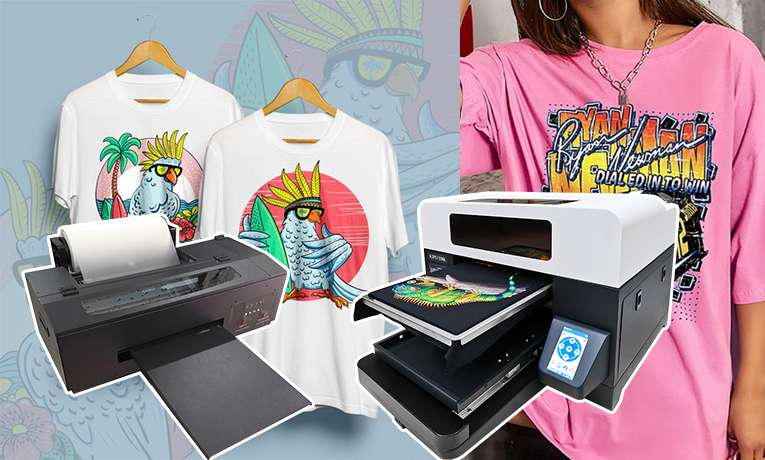Textile DTG Printer—Environmental Friendly Printing Machine
Textile DTG Printer—Environmental Friendly Printing Machine
1. Water-based inks are used in DTG printing machines.
Printing processes are mechanical and chemical systems that work together. While it appears to be a simple process, DTG printing employs water-based biodegradable ink that is easy to clean with water.
What distinguishes it from other types of ink is that it is free of plastics such as polyvinyl chloride (PVC), which contain dangerous chemical additives that are toxic and can evaporate into the air over time.
2. It consumes less water
DTG printing uses inkjet technology and less water because it uses a printer that directly applies the ink to the shirts, as opposed to screen printing, which requires some washing on the person doing the printing as well as the screens and other materials used.
Unlike other plastisol-based printers, it produces less waste and less water due to direct inkjet printing. Because of the potentially hazardous wastes it generates, this oil-based ink requires a variety of chemicals to clean up and is not as sustainable or eco-friendly.

3.The machines are environmentally friendly
DTG is a type of digital printing technology, and some companies that develop DTG printing tools encourage environmentally friendly practices such as water conservation.
The new Sublistar textile DTG printer, for example, employs digital technology to enable high-quality printing without the need of water. Instead of dying, it supports a new method of mass-producing clothing, in addition to the possibilities presently available in the textile sector.
4. Garments are created in humane working conditions
Garment printers are not difficult to use, and the only human safety hazard that could arise with DTG printing is how cotton shirts are made, as well as the actual working conditions created by start-up owners.
Aside from that, the materials to be employed and the textile DTG printing process as a whole do not contain unfavorable terms for its operators and users. Above all, it provides an opportunity for both consumers and producers to make better decisions.
5. DTG printing is not harmful to animals
Furthermore, the production of textile DTG printers and the inks they utilize do not harm animals. The printing procedure is not limited to cotton shirts. Many businesses and designers are already taking advantage of them for custom printing on cloth, wood, and canvas.
Aside from the use of water-based inks, they all have one thing in common: they do not involve animal cruelty. However, the materials to be printed on should be carefully selected by producers so that less harm is done to the environment.
6. It consistently makes prints
There are few constants in life, but when it comes to making clothes of comparable high quality, they are almost certainly created identically.
While screen printing can be uniform, because it is done by hand, there is a greater potential of not producing identical prints. Its procedure contains numerous variables, each of which has a different effect on print.
DTG produces consistent prints since technology employs a digital file and prints directly from the computer, eliminating the need to worry about external variables.
What should we use textile DTG printer in a environmental friendly way?
Recycle or repurpose old clothes
This is pretty simple using DTG printing. Because of the fast and effective technology employed in this printing method, anyone, even at home, can accomplish it. Old cotton shirts may easily be reprinted with fresh prints, kicking off your journey to zero waste fashion.
Consider quality above quantity
Good-looking clothes can be easily identifiable, especially given that there are so many lines producing high-quality apparel. While some may appear to be more expensive to you, keep in mind that they will most likely last longer.
Many sustainable fashion practitioners, as the saying goes, “buy less and shop better.” Aside from reducing clothing waste, one may also choose to purchase higher-quality clothing.
